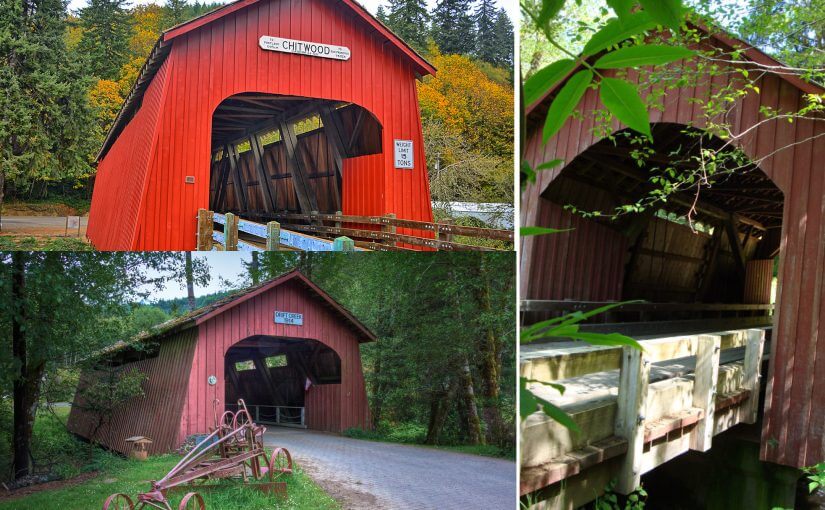The Legacy of Oregon Coast Covered Bridges
Oregon Coast covered bridges are examples of a remarkable pioneer engineering feat. Cover bridges existed in Europe, but we built longer, more elegant and well-engineered structures.
In the late 18th and early 19th century, people travelled many miles to see them, write about them, and sketch them. These iconic structures still draw visitors from around the globe, because they’re truly unique and demonstrate the ingenuity and fortitude of early American settlers.
Once, about 10,000 covered bridges existed in America and around 600 in Oregon. Today, only 800 remain nationwide, and 51 still stand in Oregon. You can visit 5 of these covered bridges when you visit the scenic Oregon Coast.
The earliest Oregon covered bridges are from the 1850s, but most sprung up between 1905 and 1925. Builders used the abundant Douglas fir of the area because its long spans suited bridge construction. Covering the bridges protected them from rot from the wet Oregon climate.
In other parts of the country, the covered bridge fell aside when builders started to use iron in the 1860s and ’70s. By the 1920s and 1930s, most bridges were concrete and steel. These three covered wooden bridges bucked the trends and are available to view on the Oregon coast today.
Chitwood Bridge
You can find the Chitwood Bridge 17 miles east of Newport on Highway 20. You’d never know that Chitwood was once a bustling town with stores, homes, a post office, a dance hall and a railway station. Steam locomotives used to stop here on their trip from Yaquina to Corvallis to take on passengers, freight, water and fuel. Today it is a ghost town.
The 96 foot covered bridge was built in 1926 and restored under the federal National Historic Covered Bridge Preservation Program and Lincoln County in 2014. The bridge now has a new roof and siding and a new coat of bright red paint. The restoration also included extensive structural repairs.
Drift Creek
The Drift Creek Bridge has a colorful history. It was built in 1914, just south of Lincoln City. Even though officials designated it a historical memorial to the Lincoln County pioneers, it fell into disrepair. It was eventually condemned and dismantled in 1997. The County gave the timbers to a local family who own land only eight miles to the north of the original site.
Today the resurrected covered bridge frame stands in a beautiful, park-like setting on private land. The property owners granted an ongoing public easement for heritage purposes. The bridge belongs to the county, but the property owners maintain the bridge. You can access it through Bear Creek Road off Hwy. 18.
Yachats Bridge
The Yachats Bridge spans the North Fork River. It was built in 1938 and rehabilitated in 1989. It also has an interesting history. First, the community removed the roof to allow a mobile home into the area in the 1980s. Later, a fuel truck crashed through a bridge approach. The 1989 rehabilitation included replacing the weakened approaches as well as trusses, siding and the roof.
Currently, plans are in the works to rehabilitate the bridge again through the National Historic Covered Bridge Preservation Program. Once completed, the $665,000 plus project will include replacing key components, siding, rail, and paint. The bridge is 7 miles east of Yachats River Road and then 1.5 miles north on N Yachats River Road.
*****
If you’re interested in covered bridge, two more exist at Five Rivers and Sandy Creek. There’s no need to stay in stuffy hotels while you explore these architectural marvels. Our well-appointed Lincoln City and Depoe Bay condos offer ocean views, affordability, and convenience as you explore the Oregon Coast and its heritage treasures.
Posted on 09/04/2016 in Depoe Bay, Lincoln City


